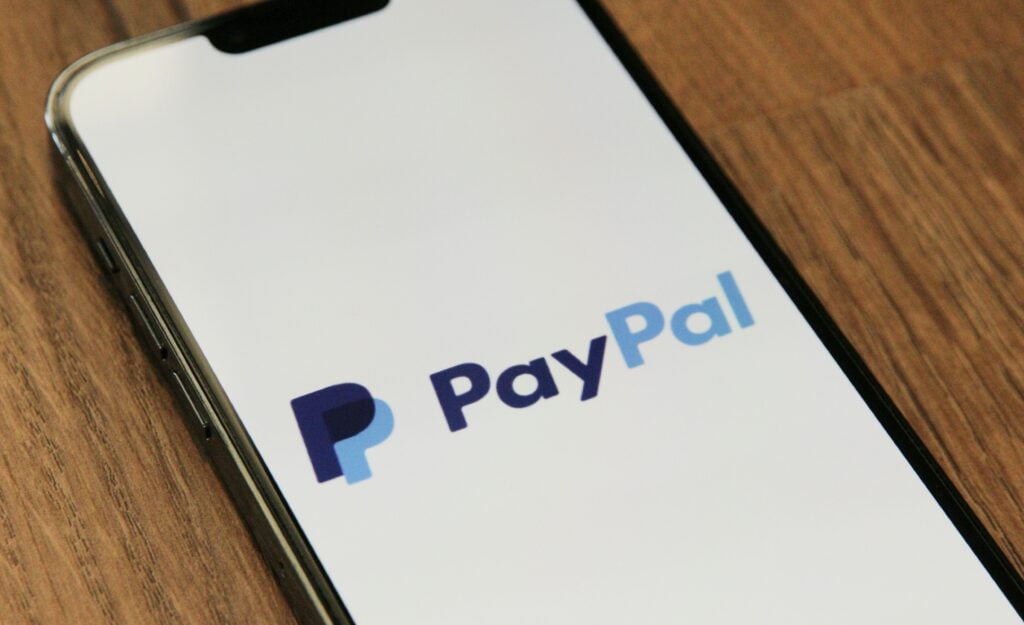Welcome to the digital age’s frontier, where the rapid evolution of online marketplaces keeps even the most seasoned eCommerce professionals on their toes. This week, courtesy of our electrifying insights at The Checkout Point podcast, brought to you by blikket.co, we navigate through the latest buzz that’s shaping the eCommerce universe. With a spotlight on the year’s 14th week, we delve into a realm filled with groundbreaking news, emerging trends, and transformative strategies that are redefining the eCommerce domain.
As part of our voyage, we first fasten our seatbelts for a whirlwind tour through the digital marketplace dynamics that have caught many off guard. We’re talking everything from unexpected fee introductions causing ripples across Mercari, to Amazon’s bold expedition into the Brazilian market. These shifts are not just news items; they are crucial factors influencing online sellers’ strategic decisions and survival tactics in an exceptionally fluid landscape.
Our exploration doesn’t stop there. We put a magnifying glass over Amazon’s innovative stride towards fortifying its defenses against scam sellers through an unexpected ally—human verification. This intriguing mix of tech savvy and the human element is carving out new paradigms in eCommerce security trends, promising a fascinating shift in how we perceive online shopping safety.
And there’s more. With an eye on PayPal’s forthcoming User Agreement tweaks, set to redefine security measures and uplift the user journey, we’re at the cusp of witnessing yet another milestone in the digital transaction space. This adjustment mirrors the evolving expectations and necessities of both consumers and online entrepreneurs alike.
The Fusion of AI and Logistics: A New Era for Small Sellers
Further down the path, we’ll be analyzing how AI’s synergy with logistics giants like FedEx is igniting a revolution in favor of small sellers. This alliance not only tackles the notorious challenge of chargebacks but also opens up a new chapter where technology stands as both, a formidable ally and a game changer for eCommerce entities.
Our journey, however, also casts light upon the shadows within the digital realm, highlighting the recent data breach incident impacting millions of AT&T customers. It serves as a stark reminder of the persistent threats and vulnerabilities existing in our interconnected world, emphasizing the critical importance of staying vigilant and informed.
Thus, whether you are an eCommerce marketer striving to navigate through these tumultuous waters, an eCommerce manager on a quest for the latest trends and strategies, or simply an enthusiast keen on understanding the complexities of the online marketplace, our comprehensive overview promises to equip you with valuable insights.
So, gear up for an insightful expedition through the twists, turns, and significant milestones marking the eCommerce landscape in 2024. Stay with us as we unravel these developments, providing you with a deeper understanding of how the digital marketplace evolves in the relentless pursuit of enhanced security and innovative consumer experiences.
The Digital Marketplace Evolution: Navigating Waves of Change
Welcome back to our exploratory journey into the ever-evolving terrain of online marketplaces. Today’s discussion orbits around pivotal transformations that have agitated the calm waters of digital selling, propelling both seasoned and greenhorn sellers into a swirl of adaptation and strategic pivoting. From the vibrant e-alleys of Mercari to the colossal marketplace empire of Amazon, our narrative unfolds, revealing a tapestry of challenges, opportunities, and the indomitable spirit of the selling community.

Mercari’s Fee Fiasco: A Lesson in Community Clout
The saga begins with a controversial move by Mercari introducing a new withdrawal fee, throwing sellers into a frenzy of frustration. The outcry was immediate, vociferous, and ultimately, powerful enough to force a pause and reevaluation of this policy. This episode underscores a vital lesson about the digital marketplace landscape: the collective voice of sellers is not just a whisper in the wind; it’s a roaring storm capable of coursing through the upper echelons of decision-making.
Amazon’s Brazilian Odyssey: An Expansion Conundrum
Charting southward to Amazon’s territories, we encounter an expansion strategy turned puzzling plight for sellers with the unexpected incorporation of Brazil into seller accounts. The announcement surfaced with minimal fanfare but brought a hefty load of logistical and regulatory constraints, spotlighting the intricate dance of global eCommerce and the imperative for clear channel communication. The ordeal, detailed in a report on sellers’ Brazilian hurdles, paints a vivid picture of the unforeseen whirlwinds in territorial expansions.
Prime Day Preparations: A Race Against Time
In the chronicles of Amazon, Prime Day stands as a monumental event, likened to the Olympics for sellers, brimming with prospects of grand sales and unrivaled visibility. Yet, lurking beneath this golden opportunity was a stringent deadline set for May 17th, for deal submissions. This caveat, highlighted in recent discussions, imposed a ticking clock on sellers, urging rapid, well-calibrated preparations to harness this fleeting but potentially lucrative window.
Mercari’s Balancing Act: Guaranteed Returns Policy
Veering back to Mercari, we examine the introduction of a new guaranteed returns policy. At first glance, a boon for buyers, but a deeper dive reveals its ripple effects on sellers. This policy, while cushioning buyers, piles on another stratum of complexity for sellers, nudging them towards meticulousness in listings and quality assurance. It’s a delicate equilibrium, safeguarding buyer confidence without disenfranchising the seller brigade.
Concluding Reflection: The Agile Thrive
As we lace up our narrative, three salient points crystallize. The digital marketplace is a fluid realm, teeming with both disruptions and doorways to growth. The potency of seller communities in shaping marketplace policies is undeniable. And amidst the tempest of change, those sellers who morph challenges into stepping stones, leveraging agility, acumen, and alliance, are the ones destined to flourish.
Thus, with our sights set on the horizons of online selling, we steel ourselves for the journey ahead. It’s a path fraught with uncertainty but also abundant in opportunity. Here’s to staying vigilant, versatile, and victorious. Until our next deep dive, keep navigating the vibrant landscape of eCommerce with zest and zeal.
Welcome to a forward-looking glimpse into an aspect that underpins our digital shopping escapades: eCommerce security trends, with a spotlight on how giants like Amazon are reshaping trust and safety measures for their sprawling markets. The focus here? Amazon’s innovative approach to solve an age-old problem – scam sellers, through a method not often seen in the tech-dominated realm: human verification. It’s a journey worth exploring, giving us a peek into what the future holds for safer online shopping experiences.
The Human Touch in an Algorithmic World
Gone are the days when security checks were solely in the hands of cold, impersonal algorithms. Amazon’s pioneering of the human verification process stands as a testament to the evolving landscape of online security. By incorporating a human element into seller verification, Amazon crafts a more formidable barrier against scam artists. Why is this shift significant? It’s simple: it adds a layer of unpredictability and scrutiny that automated systems might miss. For more insights, check out how Amazon’s use of human verification is helping to curb scam sellers.

The Bedrock of Trust
At the core of any successful eCommerce venture is trust. The digital marketplace, vast and anonymous, can be a playground for scammers. However, knowing that a marketplace giant like Amazon enforces rigorous seller verification soothes the wary minds of consumers. This isn’t about deterring every single scam attempt – which, while ideal, is unrealistic – it’s about reducing them to a negligible minority. It’s about safeguarding that moment of excitement when you find that perfect online offer and click ‘Add to Cart’ without a second thought.
A Ripple Effect Across the Industry
The implications of Amazon’s approach extend beyond its own marketplace. This tactic could very well set a benchmark in eCommerce security trends, prompting a domino effect across other platforms. With each eCommerce giant adopting stricter, more personal security measures, we edge closer to an industry standard where consumers can shop with confidence, knowing their interests are protected not just by code, but by human diligence.
Staying Ahead of the Curve
While we applaud and encourage the initiatives taken by Amazon, it’s critical to remember that the landscape of online scams is ever-morphing. New tactics emerge as quickly as old ones are quelled. Thus, as consumers, our vigilance is paramount. Reading reviews, scrutinizing seller histories, and heeding that gut feeling when a deal appears too splendid to be believable are all practices we should embody. The battle against eCommerce scams is a collective effort, one where businesses lay down the gauntlet, but consumers maintain the fortress.
In wrapping up, the introduction of human elements into the security framework of online shopping platforms heralds a promising shift towards more secure, trustworthy eCommerce experiences. As companies like Amazon lead by example, the future looks bright for consumers and genuine sellers alike. eCommerce security trends may very well be remembered as the year the industry took a giant leap forward in trust and safety. Keep an eye out, stay informed, and most importantly, shop safely.
The Next Wave of eCommerce Security: PayPal’s Bold Leap
Imagine hitting that “Buy Now” button, feeling the seamless transition from browsing to owning with just a few clicks. The backend of this digital magic lies in robust security and user-friendly interfaces, pillars that are about to be reinforced by PayPal, a titan in the digital payment arena. As we stand on the brink of witnessing significant updates to PayPal’s User Agreement this May, there’s a rising curiosity mixed with a dash of anxiety among digital shoppers and e-commerce entrepreneurs alike.
We’re entering an era where digital security doesn’t just enhance user experience; it defines it. With PayPal’s impending updates, the focus is on elevating security measures to unprecedented heights. Envision a transaction so secure, it feels like an impenetrable fortress, yet so smooth, you’d barely notice the layers of protection. This is not just a relief; it’s a monumental step towards safer online shopping and selling.

An Intuitive Future for Online Shopping
The frustration of navigating through a clunky payment process is all too familiar. It’s akin to solving an unwelcome puzzle when all you seek is a quick, hassle-free purchase. PayPal’s initiative promises to dismantle this complexity, offering a beacon of hope for a more intuitive, efficient checkout experience. For e-commerce retailers, this translates to streamlined operations and a potential uplift in customer satisfaction. After all, a smooth transaction paves the way for repeat business and positive word-of-mouth.
Embracing Change in the eCommerce Arena
However, innovation comes with its set of challenges. The transition to new systems and policies necessitates a period of adjustment. Small business owners, in particular, might find themselves recalibrating their operations to align with PayPal’s enhanced protocols. Yet, the essence of progression lies in adaptation. By welcoming these changes, online merchants can unlock new avenues for growth, all while offering their customers a fortified and frictionless purchasing experience.
As we anticipate the rollout of these updates, the broader narrative focuses on the continuous evolution of digital commerce. Security and user experience are no longer parallel paths but intertwined journeys, propelling us towards a future where online transactions are not just secure but also delightfully straightforward. With companies like PayPal at the helm of this transformation, we’re not just witnessing a change; we’re participating in the redefinition of digital commerce as we know it.
In conclusion, let’s approach PayPal’s upcoming User Agreement updates with an open mind and readiness for adaptation. The horizon of eCommerce security is expanding, promising a landscape where transactions are not just protected but are also more intuitive and user-centric. The future of digital commerce beckons with open arms, and it’s imbued with possibilities that are as secure as they are exciting. As we navigate this evolving digital ecosystem, one thing remains clear – the journey towards a safer, faster, and more user-friendly transactional world is well underway, and it’s a path worth exploring.
eCommerce Security Trends: AI and FedEx Leading the Charge
Welcome back, tech enthusiasts and curious minds! Today, we’re diving into an exciting, rapidly evolving landscape where the digital world shakes hands with commerce, creating a phenomenon we’ve all come to know and love – eCommerce. But, as with any great innovation, it’s not without its challenges. Two stories stand out, shedding light on the endeavors to streamline and secure this digital marketplace. Let’s unravel them together.

The AI Hero Fighting Chargebacks
First up, we’re exploring how AI is stepping into the ring, ready to battle one of eCommerce’s notorious villains – chargebacks. Chargebacks, for those unfamiliar, occur when customers dispute a charge from a merchant to their credit card company, leading to a mandatory investigation and, if the customer’s claim is deemed valid, a refund. While designed to protect consumers from fraudulent transactions, it’s become a double-edged sword. Merchants are often left to navigate this process, sometimes unfairly bearing the cost of both legitimate and fraudulent claims.
Enter Artificial Intelligence, the hero in this narrative. AI, with its ability to learn and adapt, is being enlisted by merchants to detect, predict, and prevent fraudulent transactions before they lead to chargebacks. By analyzing patterns and recognizing anomalies in purchasing behavior, AI tools can flag potential fraud, saving merchants time, resources, and, most importantly, revenue. Now, isn’t that a game-changer? For a deeper dive into how merchants are rallying for AI in their fight against chargebacks, check out this insightful piece from EcommerceBytes.
FedEx’s Game-Changing Move for Small Sellers
But that’s not all. Let’s switch gears to another fascinating development, this time brought to us by none other than FedEx. In a move that speaks volumes about understanding market needs, FedEx has introduced a service that caters specifically to small sellers, offering a single pickup service for all their delivery needs. Imagine being a small business owner juggling the demands of your newfound venture. FedEx is saying, “We see you, and we’re here to help,” streamlining the shipping process, thus freeing up precious time for these entrepreneurs to focus on what they do best – growing their businesses. It’s a prime example of how technology and thoughtful service innovation can empower the underdog, making eCommerce more accessible to all, regardless of size. Discover more about how FedEx is changing the game for small sellers in their latest initiative here.
These stories are not just tales of advancement; they’re beacons of hope, illustrative of how technology, when thoughtfully applied, can solve some of the most pressing issues faced by merchants and small business owners in the eCommerce space. AI’s emerging role in combating chargebacks and FedEx’s initiative to support small sellers are just the tip of the iceberg. Each represents a step towards a more equitable, secure, and efficient digital marketplace.
As we continue to ride the wave of technological evolution, it’s clear that AI and strategic service innovations have a significant part to play. Not only in enhancing the operational aspects of eCommerce but in ensuring its integrity and inclusivity. So, whether you’re a tech aficionado, a budding entrepreneur, or simply someone intrigued by how the digital and commercial worlds collide, these developments are worth keeping an eye on.
That wraps up our dive into the fascinating intersection of AI, technology, and eCommerce. The landscape is changing, friends, and it’s thrilling to see how these innovations pave the way for a future that’s more connected, more secure, and more inclusive for everyone involved. Can’t wait to see what’s next on this journey. Join me again as we explore more wonders of the tech world. Until then, stay curious, stay inspired, and keep embracing the digital tide with open arms.
Welcome to the Digital Underbelly: Navigating eCommerce Security Trends in 2024

In an era where digital transmutations are both a boon and a bane, the recent AT&T data breach has emerged as a stark reminder of the precariousness of our online existence. Picture this: your personal data, once cocooned by layers of digital security, now adrift in the shadowy realms of the dark web. This is no figment of dystopian fiction but the grim reality for millions in today’s interconnected landscape.
In a grim unfoldment, AT&T faces a data leak debacle, laying bare a vast trove of customer information to the unsavory elements of the internet. This is no minor slip; the divulged data encompasses details far more intimate than just email addresses or passwords. The breach touches upon the very essence of personal privacy, throwing open a multitude of risks.
Responding with a swift code reset for millions, AT&T’s action, though commendable, feels more like a temporary patch than a cure to the underlying problem. The data, once exposed, ventures beyond the realm of retrieval, possibly fueling nefarious activities in the digital black market.
The Bigger Picture: A Systemic Warning
This incident illuminates not merely an isolated lapse by AT&T but a broader, systemic vulnerability within our digital defenses. It sends a piercing alarm to the entire industry, accentuating the dire need for fortified, preemptive measures against data infringement. It’s a reflection that, amidst the digital gold rush, the sanctity of user data often finds itself compromised, sidelined by other priorities.
For us, the end-users, this serves as a jolting nudge towards heightened vigilance. Regular password updates, the avoidance of password recycling, and keen monitoring for suspicious account activities are practical steps within our control. Yet, on a more profound level, this breach propels us towards contemplating the evolving dynamics of digital privacy and security. As stakeholders in this digital epoch, our call to action extends beyond personal safeguarding to advocating for and endorsing policies that enshrine data protection.
As the mass passcode reset by AT&T unfolds, it encapsulates more than just a technological debacle; it manifests as a clarion call for collective action. This scenario beckons us to elevate our expectations, demanding more stringent data stewardship from those who navigate our digital platforms.
Let the AT&T narrative be a catalyst, sparking a broader discourse on reinforcing our digital fortifications. It’s a timely opportunity to recalibrate our approach to online security, championing a digitized environment where personal data is not just protected but revered.
As we tread further into the digital horizon, let’s shoulder the responsibility of being the vanguards of our digital terrains. In the sprawling web of connectivity, let our collective vigilance be the beacon that guides us towards a more secure, transparent, and respectful digital realm.
Remember, safeguarding the digital frontier is not solely the purview of tech giants; it’s a shared crusade. Stay vigilant, stay informed, and together, let’s architect a safer digital future.
As we close this chapter on the latest and greatest in the realm of eCommerce, it’s clear that the digital marketplace continues to evolve at a breakneck pace. The insights from ‘The Checkout Point’ podcast, skillfully narrated by Max, offer a valuable perspective on navigating the ever-changing online shopping landscape. From the implication of new fees by Mercari to Amazon’s inventive strategies against fraudulent sellers, the conversation spanned a host of pivotal developments that are shaping the future of eCommerce.
Looking Ahead: eCommerce Security Trends
While this week’s discussion illuminated several aspects of the eCommerce journey, one pressing issue that stands at the doorstep of every digital marketer is the looming specter of online security threats. As we tread into 2024, eCommerce security trends are taking center stage, demanding our collective attention and action.
Cybersecurity in eCommerce is not just a buzzword but a pivotal foundation that supports the trust and integrity of online shopping experiences. With millions of transactions happening every day, the sector is a ripe target for malicious actors. The recent data breach affecting AT&T customers serves as a stark reminder of the vulnerabilities that exist within our digital walls.

What’s Next for eCommerce Security?
So, what does the future hold for eCommerce security? How will emerging technologies, such as AI and blockchain, contribute to fortifying our digital defenses? These are questions that beckon for comprehensive deliberation and proactive strategies.
Security trends in the eCommerce landscape are evolving to encompass not only the protection of sensitive customer data but also ensuring the integrity of transactions and the authenticity of products. The battleground against cyber threats is witnessing an upsurge in innovative solutions, from advanced fraud detection algorithms to multi-factor authentication and beyond.
Your Voice Matters
Now, we turn the microphone over to you, our readers. How do you perceive the evolution of eCommerce security protocols? Are there any specific trends or innovations that you believe will shape the landscape in 2024?
- Have you or your business encountered any cybersecurity challenges in the digital marketplace?
- What measures are you taking to ensure the online safety of your eCommerce operations?
- In what ways can businesses and consumers collaborate to foster a safer eCommerce environment?
As we continue to ride the eCommerce wave, staying ahead of security trends is not just beneficial—it’s essential. We invite you to share your thoughts, experiences, and predictions for eCommerce security trends in 2024. Your insights could provide valuable guidance for fellow eCommerce marketers, owners, and managers navigating these digital waters.
Remember, the conversation doesn’t end here. Visit blikket.co for more insights, tips, and resources tailor-made for the eCommerce aficionado. Together, let’s empower our digital marketplaces, ensuring they are secure, innovative, and thriving grounds for commerce.
Until next time, keep your digital doors locked, your data encrypted, and your mind open to the endless possibilities that eCommerce security trends herald for the future of online shopping.










